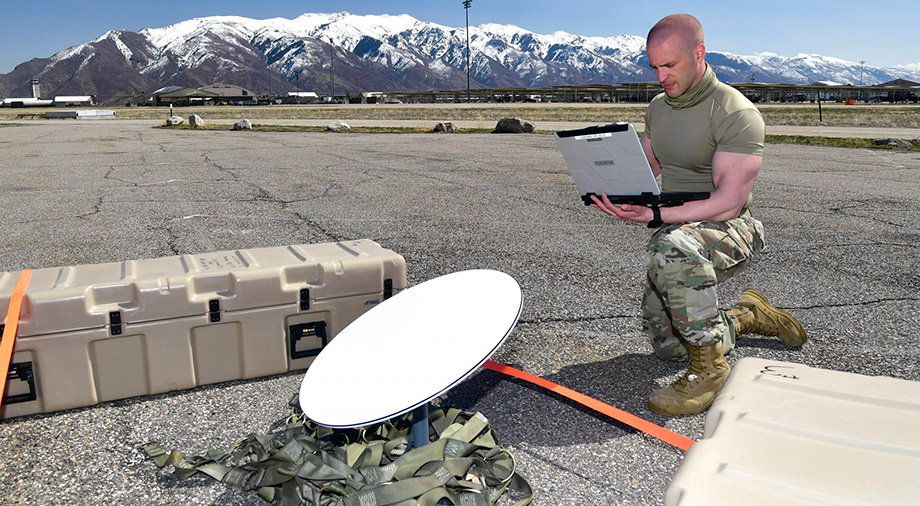It may surprise you to learn that military testing of Starlink’s satellite internet technology began back in 2018, a year before the constellation’s first satellites were launched into orbit. The Pentagon has kept a close eye on its developments from the start, and SpaceX has apparently been waiting for Starlink to become strong enough for the military to be willing to offer its own contracts.
This turned out to be the right strategy. As soon as the first Starlink satellites went into orbit in May 2019, SpaceX received a $28 million contract from the United States Air Force (USAF). Under its terms, the company was to test stable satellite communications services for American combat aircraft.
Developed over the course of five years, Starlink’s satellite internet for commercial use Starlink has abruptly ceased to be merely civilian. In this installment of our series, we will look at Starlink’s applications to national security issues.
Pentagon Interest: Starshield as a Concept for a Layered National Security Architecture
The military wanted to see the results of these satellites. If they were capable of broadcasting memes to Hawaii for civilians, then why couldn’t they help the military do its job effectively? Control of the most valuable resource for modern warfare – operational information – promised great prospects.
The USAF decided to test the new satellite internet first. Tests of the technology started immediately after SpaceX signed the contract for it in 2019. First, the Air Force successfully tested internet connection on a slower twin-engine aircraft, the Beechcraft C-12 Huron. During the test flight with the Starlink terminal, the data transfer rate was 610 Mbps. Later that year, satellite communications were evaluated for the larger Lockheed AC-130.

Later on, modern fighter aviation was also connected to the project. Starlink tests in March-April 2022 took place on the fifth-generation supersonic the F-35A Lightning II fighter jet, whose maximum speed reaches 1906 km/h (850 km/h at cruising speed).
Air Force command stated that during the testing of the system during exercises, pilots from the 388th fighter wing pilots reported 30 times higher internet connection speeds compared to existing communication systems (especially milsat). The lightness and compactness of the Starlink receiving antenna made it possible to install it on the F-35A Lightning II without any problems. Pilots also praised the technology’s ease of use, as it took them on average less than 10 minutes to fully set up the system from scratch and begin using it.
Of course, aviation is only the beginning. The most important step was to test Starlink’s ability to coordinate the interactions among multiple battle domains. In 2020, USAF trials showed Starlink’s advantages with this task as well. Ground forces using Starlink terminals established communication with a Boeing KC-135 Stratotanker transport aircraft, which acted as a command headquarters controlling their operations from the air.
The military particularly valued the stability of the satellite signal. Thomas Wellington, an expert in battlefield communications, explained that Starlink’s narrowly focused broadband radiation makes it virtually immune to interception and jamming by enemy electronic warfare (EW) equipment. This has been made possible specifically thanks to the placement of a satellite constellation in low Earth orbit.
In December 2022, SpaceX officially announced its Starshield project – a military analogue of Starlink designed to provide defense customers with an affordable and secure broadband connection, as well as deliver payloads into orbit for US government and military departments.
It is important to understand that Starlink is not so much a means of satellite communication, but a time-tested reliable satellite bus technology that can accommodate various payloads as needed, including radars, optical cameras, and infrared (IR) missile launch signaling systems. It is obvious that the Pentagon is interested in getting the most it can out of the functionality provided by Starshield satellites.
It has already been announced that Starshield satellites will be structurally different from their civilian counterparts: two solar panels instead of one, and more than double the size of the most active communications satellite. Outwardly, they will still be similar to Starlink Block v1.5 and v2.0. However, the secrecy of the program suggests that we will not know about their exact technical specifications for quite a while. The first satellites of the Starshield constellation were likely launched into orbit during the secret Globalstar FM15 mission, which took place in June 2022.
SpaceX has found its perhaps the most coveted client in the Pentagon. If the Starlink commercial platform was set to earn about $30 billion in profit (according to 2019 forecasts), then government orders promised even more. We see this today in billion-plus-dollar contracts with the Pentagon for the development of the SDA Tranche 1 Transport Layer constellation. Starshield is likely to get even more.
Unexpected uses for lasers
Let’s not forget about the more extensive possibilities of lasers which are now being unlocked. If Starlink uses lasers for inter-satellite communications, then why can’t Starshield use them to disable an IR-guided missile? Similar technology to counter heat-seeking missiles is already used by the US Air Force.
Infrared Countermeasure (IRCM) is a compact laser system capable of precisely aiming a laser at the thermal sensor of an IR-guided missile and disorienting it, causing it to deviate from its target. The use of this kind of system to protect satellites from missile attacks today no longer seems so fantastic and futuristic.
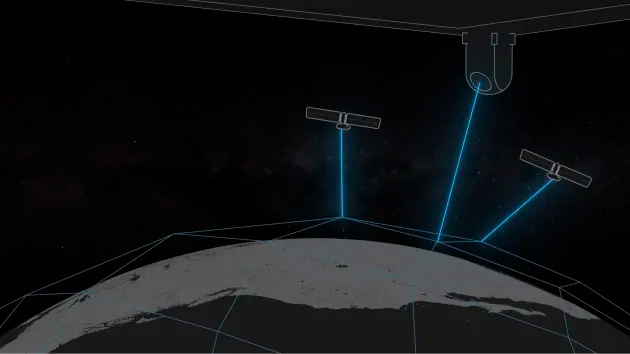
In theory, one could go even further, and even come up with a concept of using lasers to disable ballistic missiles, including ones with nuclear warheads. A constant laser emission of only 5 W is enough to disorient a ballistic missile’s infrared guidance sensors. The main task here is to target the missile and its subsequent tracking, especially if it is capable of maneuvering (like a modern hypersonic missile).
It may seem quite technically complicated, but the possible defense benefits speak for themselves. Even with the potential risk that a missile loaded with nuclear warheads could be deactivated even at the moment of launch (with subsequent loss of warheads over the territory of the country launching them), this threatens to make nuclear weapons themselves ineffective.
In the early 1980s, Ronald Reagan dreamed of similar technology with his Star Wars space defense initiative. The concept of the Brilliant Pebbles satellite constellation that appeared at the time proposed to shoot down enemy missiles using other missiles installed on a thousand satellites in low Earth orbit.
But missiles are a conventional class of weapon that cannot be placed in space according to the provisions of the 1967 Outer Space Treaty (OST). On the other hand, it is difficult to apply these provisions to lasers. This indirectly confirms a recent NASA study on using lasers in orbit, in particular to disintegrate small orbital debris with a laser pulse. NASA analysts came to the conclusion that the power of such installations would be 1000 times below the level necessary to disable satellites.
We still do not know if Starshield is carrying out something similar in its project, but fresh examples from other US military technologies reasonably suggest such thoughts. In addition, in 2022 the Russian Federation stated that it is already developing such technology. This means only one thing: that the US Space Force mustn’t waste any time.
First combat test: helping Ukraine
Starlink was connected to Ukraine’s internet system just two days after the start of Russia’s full-scale invasion. Elon Musk approved the request from Ukraine’s Minister of Digital Transformation of Ukraine Mykhalo Fedorov, publicly received via Twitter. Without any formalities and bureaucracy, the first Starlink terminals were in Ukraine within weeks.
Later, SpaceX President and CEO Gwen Shotwell said that negotiations between SpaceX and the Ukrainian government had been held a month and a half prior to the start of the invasion (after all, we remember that the US sounded the alarm on Russia’s imminent invasion in January 2022).
The terminals came in very handy, as they helped restore government communications with critical infrastructure that had been knocked out by the invaders’ first missile salvos. Ukraine’s banking system also avoided collapse, largely thanks to access to satellite communications.
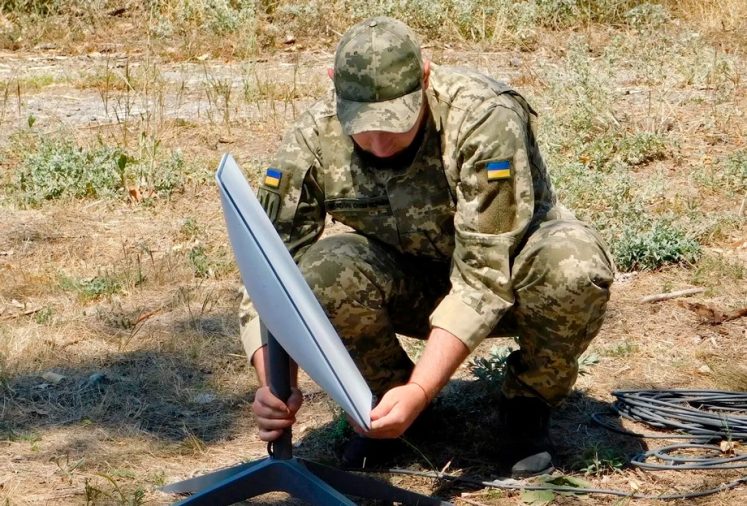
The Ukrainians did not limit their use of Starlink to supporting civilian infrastructure. On the battlefield, where fast and accurate information is critical to gaining strategic initiative, Starlink antennas have made their mark. It was thanks to the terminals delivered by helicopter to the Azovstal metallurgical complex besieged by the Russians that the world learned about the garrison’s heroic defense. With the help of Starlink, defenders remained in contact with Ukrainian artillery, skillfully guiding its fire. For 86 days, Azovstal was a bone in Putin’s throat, preventing him from gaining ultimate control over Mariupol.
Satellite internet has allowed the Armed Forces of Ukraine to make masterful use of drones, both for reconnaissance purposes and for striking the enemy. In the early morning of October 29, 2022, a grouping of six to eight units (according to Geo Confirmed), consisting of Ukrainian unmanned surface vessels (USVs) with Starlink receiving antennas attached to the stern, carried out a daring and effective strike on the Russian Black Sea Fleet anchored in occupied Sevastopol. As a result, at least three Russian warships were seriously damaged, including ones which launched hypersonic Kalibr cruise missiles at Ukraine.
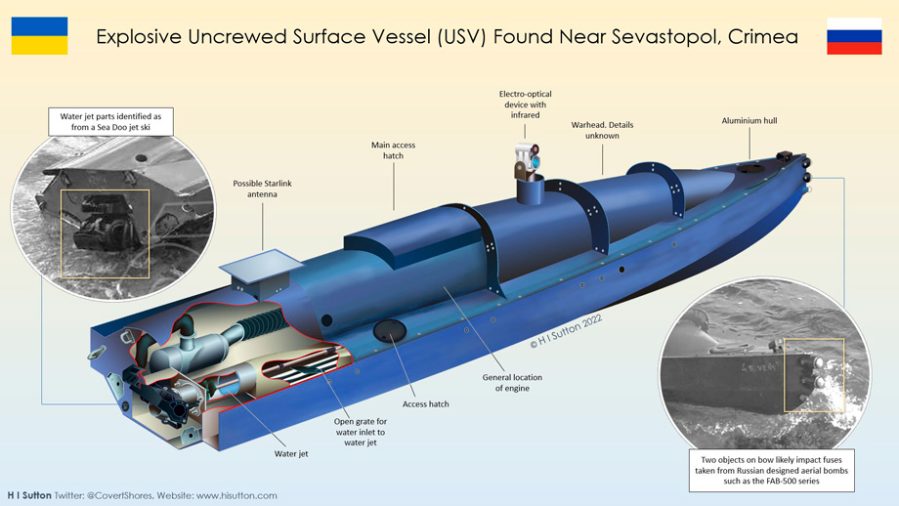
Source: H I Sutton and news.usni.org
Ukraine’s successful use of Starlink technology by Ukrainians to strike the occupiers’ fleet unexpectedly outraged SpaceX. Musk decided that SpaceX needed to take a “disinterested” position and declared both himself and through SpaceX that Starlink could no longer be used for combat operations. Even more, on February 8, 2023, SpaceX deactivated certain functions of its internet service, thereby preventing Ukrainian soldiers from using it to operate combat drones.
In addition to this sudden outburst of principled neutrality, Musk also demonstrated a talent for entrepreneurship. On September 30, 2022, during heavy fighting on the eastern front, the Ukrainian army suddenly lost access to satellite communications in several important tactical areas at once. This sudden break in communications had disastrous consequences. It is still unknown what exactly caused the signal loss, but just two weeks later, on October 14, 2022, Elon Musk warned that maintaining Starlink in Ukraine costs SpaceX $ 20 million a year, and that the company’s support for these expenses “cannot last forever.” During one of the most crucial periods of Ukraine’s autumn campaign, Musk began haggling with Ukraine’s Ministry of Defense (DOD) for a better contract.
And although Musk assured Ukraine a day later that Starlink would continue offering its services to them, the situation left a bitter unpleasant aftertaste. As for the US Department of Defense, a contract with SpaceX for the purchase of new terminals and satellite services for Ukraine was concluded in June 2023. Its amount was not disclosed, but we can presume that it was similar to the one that Musk publicly announced in the fall of 2022.
In retrospect, SpaceX would have received this contract anyway, if only because there is no one else in the world which can provide the services they do. The issue is that at a certain point, the affair turned into another poker match for Musk who, taking advantage of his strong hand, decided to raise the stakes. The Ukrainians were certainly not very understanding of this.
Starlink’s help to Ukraine during this war can hardly be overestimated. The satellite constellation continues to contribute to effective government administration, interagency communications, and (whether Musk likes it or not) effective military actions. The unfortunate result was a conflict typical of those expected between a large space business and military agencies.
This confusion could please only America’s main strategic opponent – China. However, Beijing was in no hurry to rejoice.
Above the Celestial Kingdom’s Skies: China’s Belated Response
Despite the Chinese surveillance balloons which drifted over the US in February 2023, the PRC had few reasons to be jolly. As they were fulfilling the points of their 14th (seriously) five-year plan, China’s Communist Party elite suddenly realized that they had thought of everything except one thing: an adequate Starlink countermeasure. China was at least five years behind in this race, which in the case of intelligence and communications technologies was simply a colossal gap (remember the Nazis’ shock when the Allies deployed radars capable of detecting German aircraft and submarines during World War II).
China needed to improvise, which it began to do by announcing the development of its own Guowan LEO constellation. This became known only in 2020, when the International Communications Union in Geneva received an application from China to place over 13,000 active communications satellites in LEO. In 2021, the PRC established a government regulatory body to oversee the development of the Guowang satellite constellation project.
Since then, there has been very little information about the new constellation in the Chinese media, but there are indirect signs that movement on it has really begun. Galaxy Space, a private satellite company headquartered in Beijing, successfully launched six V-band active communication satellites into orbit in March 2022. This at the very least indicates that work on the serial production of satellites for a future constellation is underway, and that China really has the appropriate resources to implement its plan.
Part of China’s failure with its own satellite constellation is evidenced in the country’s ambition to quickly build a lunar base. At the moment, China has been able to attract a number of traditionally “close” countries – namely the Russian Federation, the United Arab Emirates, Pakistan, and the Asia-Pacific Space Cooperation Organization (APSCO) – as partners for the construction of the International Lunar Research Station (ILRS).
Today, Beijing is investing in the development of its own aerospace giants and the construction of infrastructure they will need for launches. Thus, recent statements by the Chinese company Space Pioneer about the beginning of construction for their new rocket Tianlong-3 (set to be a counterpart of SpaceX’s Falcon 9 workhorse) only confirm the PRC’s intentions to follow the West’s already-tested model. And although China intends to use the proven, more powerful Long March 5B and Long March 8 rockets to launch the Guowang LEO satellite constellation, it is obvious that there will be a customer for the capabilities offered by Tianlong-3 (launching up to 17 tons per LEO launch).
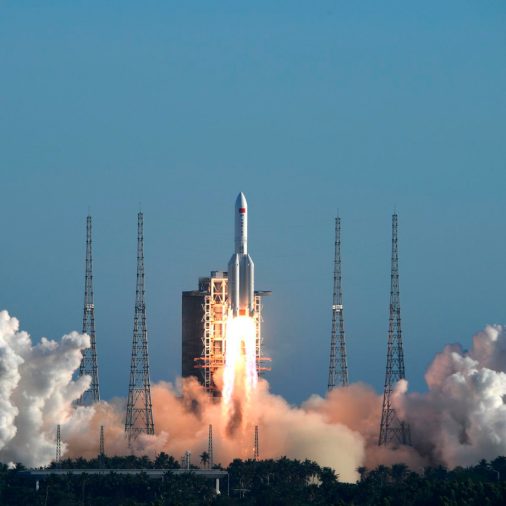
Xinhua News Agency/Getty Images
Despite the sluggishness that characterizes Chinese space today, there is one thing that certainly must be credited to them – their a gradual and systematic increase in the pace of both the production of rockets and satellites and their launch into orbit.
Just consider the numbers. In 2015, China conducted only 19 orbital launches. By the end of 2022, this figure had already reached 64 successful space launches (for which private companies accounted for 25%). New projections from China’s commercial space launch sector claim that in 2023, China could at least double its launches in 2023. This means that by the end of this year or the beginning of next, we will likely see the first Guowang satellites beginning to take their places in orbit.
As of mid-2023, it is worth recognizing that China has nevertheless drawn conclusions from the missed moment for the development of its own satellite internet constellation. To do this, however, according to the good old communist tradition, it took only one five-year plan.
Weaknesses and strengths of merging national security with the private aerospace sector
The concentration of such a valuable intelligence and operational resource solely in SpaceX’s hands has many nuances, both beneficial and not.
During the Russo-Ukrainian war, Musk has already demonstrated how easily he can deprive his own allies of information and communications in order to extract a bit more money from the Department of Defense for himself and his company. There is no need to explain the calculus: every extra hour spent haggling in clean and spacious offices cost the lives of ordinary Ukrainian soldiers fighting for the sovereignty of their country.
The situation is quite revealing. As one of the world’s biggest businessmen, Musk will always pursue his personal interests. As experience shows, these do not always coincide with the interests of national security. Accordingly, the Pentagon is trying to “dilute” its communications architecture by attracting third-party private companies to implement individual projects. Hence the recent five-year contract DoD concluded with the satellite company SES Space & Defense on June 28, 2023, which is set to provide the military with stable and secure X-band satellite communications. This will not be done by Starlink satellites, and the Pentagon seems to be hinting to Musk that they can find an alternative to his technology if they so choose, which should obviously make SpaceX more accommodating in the future.
On the other hand, there are also positive aspects. SpaceX, as a private company, is certainly much more flexible in the implementation and development of its strategies. As an independent player, it is ready to respond quickly to new challenges that emerge during the war. Thus, Russian hacker attacks on Starlink forced the company to rapidly strengthen its own cybersecurity. The Ukrainian troops and the government (as the user and buyer of the Starlink service) did not have to spend their own resources on solving this problem. All they had to do was wait for the security updates, which a giant company like SpaceX was able to provide in short order.
After all, it was the experience of working with the commercial aerospace sector that finally allowed the Pentagon to gain access to innovative but nevertheless simple and understandable technology of stable satellite communications that can be rapidly deployed at all levels of government.
This sort of situation is hard to imagine, for example, in China, where the clumsy party-bureaucratic machine can slow down the pace of the implementation of projects like Starlink. To be fair, Chinese space is now increasingly starting to play business, nurturing its own private aerospace companies and investing in infrastructure development to meet the needs of commercial launches.
In this context, the political aspect of Musk’s activities is becoming more and more interesting. The SpaceX head repeatedly makes controversial political statements, some of which clearly contradict Washington’s official line today. Too close a merger between SpaceX and government interests could indeed have far-reaching implications in the future.

